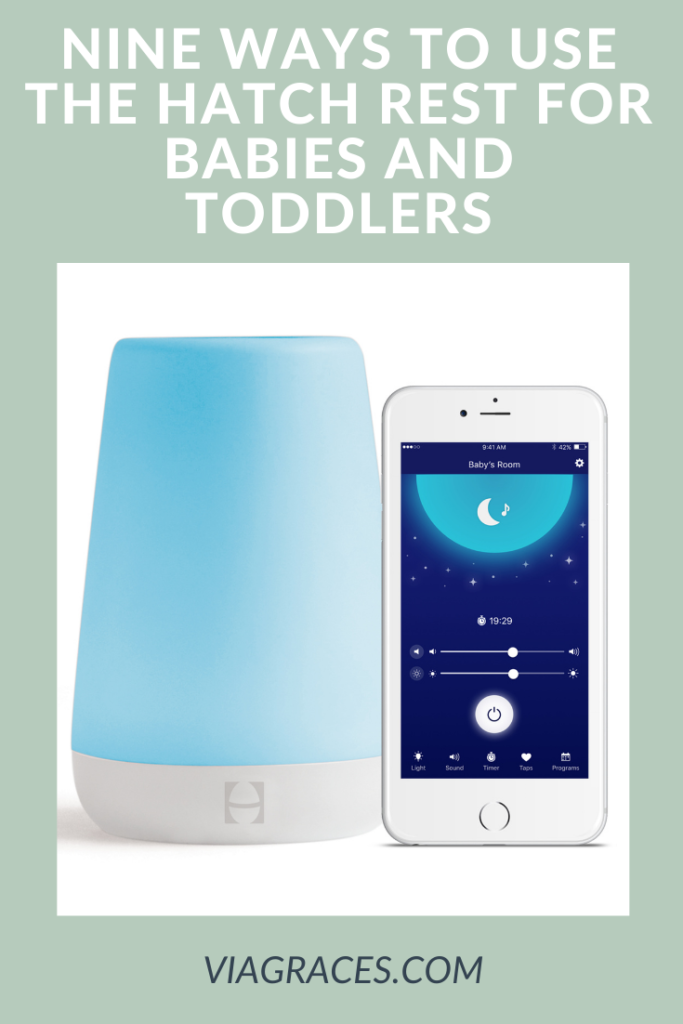I am definitely a minimalist at heart and really don’t like having extra or unnecessary things around the house – for me, Jason, or the kids. And there are SO many baby and child products out there that just aren’t necessary!
In fact, there are some products that are not only unnecessary, but I really suggest you don’t get them. You can read about those products here.
There are also lots of products out there that, while we don’t technically “need” them, they prove to be very helpful, and when it comes to the world of sleep, I’m willing to pay for a product if it will help keep solid sleep in tact.
Some of those products include sound machines, blackout curtains, swaddles or sleep sacks, and lovies.
I am NOT advising that we give in to all of the gimmicky products that guarantee better sleepers – the bedtime lullabies that are sure to put your child right to sleep, or the weighted sleep sack that will feel like mom’s touch. Don’t get me started on those…
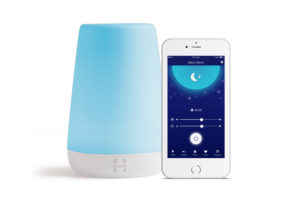
Though there isn’t one product that will magically solve all of your child’s sleep challenges, there are some we can use that help keep sleep on track, or help give our kids the boundaries they need around sleep. And these products are IN ADDITION TO (not in place of) solid sleep skills.
One of my all time favorite baby/toddler sleep products is a toddler clock, and my go-to toddler clock is the Hatch Rest. In this post I’ll share, why the Hatch Baby Rest is the best toddler clock, including:
- Why the Hatch Rest is better than other toddler clocks
- How to use the Hatch Rest with your newborn
- Why the Hatch Rest is a great night light and what color it should be
- How to use the Hatch Baby Rest for your toddler’s bedtime routine, nap time, and/or quiet time
- How the Hatch Rest helps your child learn to stay in their own bed all night
And more!
So first of all, why the Hatch Baby Rest versus other toddler clocks?
First of all, the Hatch Rest is the only toddler clock I’ve used, so I may be a tad biased.
But here’s why I chose the Hatch for my girls and why I recommend it to all of the families of toddlers and older children that I work with.
You can program the Hatch right from your phone.
That means you don’t have to be in your child’s room to set or change the programs!
This is especially key when you’re introducing the idea of the toddler clock. To help your child learn that you will come get them once their light turns blue, or that they can get out of bed once it turns green, it’s helpful to change it just a few minutes after they wake up to give them quick reinforcement and to help them catch on to its use.
So rather than programing it to come on at the same time each day, you can change it according to when they wake up the first several days. Once they start catching on and their morning wake up time is consistent, then you can set a regular program.
But even once programmed, if your child has an off day and wakes up earlier than usual, or sleeps later than usual, you can still adjust it accordingly from your phone.
You can set multiple programs!
My favorite use of the Hatch is having it turn on, or change colors, to alert your little one that you are coming in to get them, or to remind them it’s still time to lay in bed quietly. And like I mentioned above, once your child has caught on to their toddler clock, you can program it to come on at the same time every morning without having to manually do so every day.
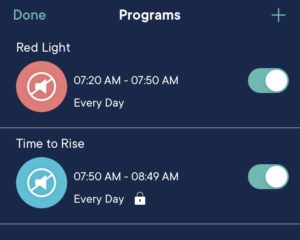
You can also program the Hatch to be a night light all night long, use it for your little one’s quiet time, during their bedtime routine, etc. (Read more about those examples below.)
These are all programs you can set right from your phone and you can have multiple programs set at the same time.
The Hatch Rest is not an actual clock!
While the Hatch Rest+ does have a digital clock on it, I actually prefer the Hatch Rest because it does not have a clock on it. For older kids who are able to understand the concept of time, or kids who start recognizing that the light changes every morning at 7:00 am, they might struggle if you change a program and it doesn’t line up with the time they’re used to seeing on the clock.
There are a variety of colors to choose from.
If your child will be sleeping with a night light, I suggest setting the Hatch to either red or orange through the night.
But your child can choose what color they’d like to wake up to! They can choose from yellow, green (“green means go”), blue, purple, or pink! This choice gives your little one some extra “buy in” because they feel a part of the choices.
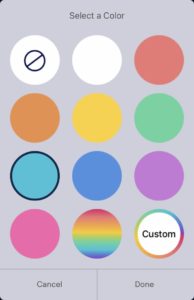
You can decide on the brightness of the light.
Whether that be for a night light or time-to-rise light, you can determine how bright or dim your child’s light is. For many other night lights or toddler clocks, you cannot control the brightness of the light that will be used.
It has a “child lock.”
Although you can turn the Hatch Rest on by a simple touch (great for overnight feedings!), it also has a “child lock.” So if you’ve set a specific program and you’ve “locked” it, your child cannot turn it off or change it by simply touching it. Yay for helpful boundaries!
Now that you know why I recommend the Hatch Rest over other toddler clocks…
Here are 9 Great Uses of the Hatch Baby Rest
Night Feedings
For those newborns and young babies who still need night feedings, the Hatch is a great option for a night light so you can see what you’re doing as you change your baby’s diaper and as you feed them!
One, you can simply touch the top of the Hatch and the light comes on. Then when you hold down for a few seconds, the light turns off.
Two, you can also set it to a low red or orange light, so it does not interfere with your baby’s sleep (or yours!) – other colors block the release of melatonin and can be too stimulating for babies and adults, alike.
Fear of the Dark
As imaginations start running wild around the age of two or three, some kids start expressing a fear of the dark. While having a room super dark is ideal for great sleep, we also don’t want our kids to be afraid!
Rather than opening the blinds a bit, and running the risk of sunlight waking your kiddo up in the morning, or plugging in a classic little white night light, the Hatch acts a great night light!
Red and orange lights do not block the release of melatonin and therefore interfere with sleep as much as something like a blue or white light, and with the Hatch you can choose either of those colors to act as your child’s night light.
Overnight boundaries
For kids who have transitioned out of the crib and into an open bed, boundaries can easily become a struggle. Now that they’re in an open bed, your child wants to see what will happen if they get out of bed throughout the night!
One way to help establish boundaries around bedtime is turning the Hatch onto a low red light and teaching them the saying, “Red means bed.” So each time your child gets out of bed, you remind them, “Your light is still red, it’s time for sleep. Lay down, close your eyes, and be quiet.”
The Hatch helps give your child more responsibility over their night wakings and takes the pressure of the parent saying, “Because I said so,” and rather it’s, “Because the light is red.”
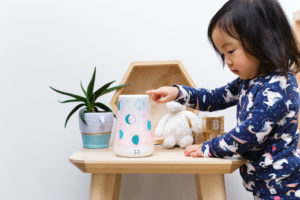
Early Morning Wakings
Similar to night wakings, some kids struggle with waking up super early in the morning, or jumping out of bed the moment their little eyes pop open. Implementing a toddler clock can not only help solve those early morning wakings, but it can help teach your child that even if they wake up a bit earlier than usual, they’re still expected to stay in their bed until the light changes.
Bedtime Routine
Some even use it to help their toddlers and older children get through the bedtime routine with less of a fight. For example, when the clock turns yellow, that’s final call for a potty stop or or a drink of water, and once it’s red, “It’s time for bed.”
Quiet Time
I am a big fan of establishing a regular quiet time for kids who are no longer napping.
One way to teach your child how to keep track of when it’s quiet time and when quiet time is over is by using your Hatch! You can use light, sound, or some combination of light and sound.
For example, the light could be blue during quiet time and then change to green when quiet time is all done. Or the light could be red during quiet time without any sound, and then when quiet time is over, the light turns off and a sound comes on.
Slowly Wake from Nap Time
I know, I know, waking up a sleeping child is the worst…I’ve been there! But sometimes it really is necessary.
Rather than swinging the door open and turning the harsh lights on, you can help your child slowly start to wake up by turning on the Hatch and changing the sound to something like birds chirping to more gently stir them out of sleep.
Then once you get in there, your child is already starting to wake up.
Sound Machine
We know that white noise is a comforting sound for our newborns, and as babies and kids get older, sound machines are a great tool for parents so we don’t have to worry about waking our kids up during nap time or overnight.
And the Hatch’s TV setting is the best option for white noise.
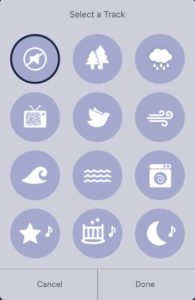
I will be honest, however, I don’t love the sound settings on the Hatch. If you want one product that will do all of the above, the Hatch Baby Rest is definitely it! But if you have another sound machine or it’s in the budget to get a different one, other sound machines have white noise that is more “enjoyable” to listen to.
Pretend Play
One of Olivia’s favorite things to do is come into her room, turn her Hatch on, lights off, and have a dance party. I mean, it’s basically a modern-day disco light!
I’ve even seen pictures of families who put tissue paper or construction paper around their Hatch and pretend it’s a campfire.
With a great imagination, the opportunities are endless!
If I already have another toddler clock, should I switch to the Hatch Baby Rest?
Probably not! I often work with families who do not have the Hatch Rest but have another toddler clock, and that’s usually okay! The number one function I look for when it comes to clocks for toddlers and older kids is a change of colors to represent morning time.
So if you already have a toddler clock with a time-to-rise function and it works for you, no need to get something else!
I’ve also worked with families who already have another toddler clock, it’s okay, but they want more choice or want to be able to change the settings or programs without being in their child’s actual room. So those families have switched to the Hatch Rest!
Conclusion
I LOVE the Hatch Rest, I swear by it with my own girls (you better believe we travel with it!), and I recommend it to many of the families I work with.
And there are so many different ways you can use it, and I’m all about practical products.
I also want you to remember…there is not one magical product that will all of a sudden fix all of your child’s sleep challenges. Your child can absolutely be a great sleeper without it!
With Grace,
Lauren
